Invasive Species
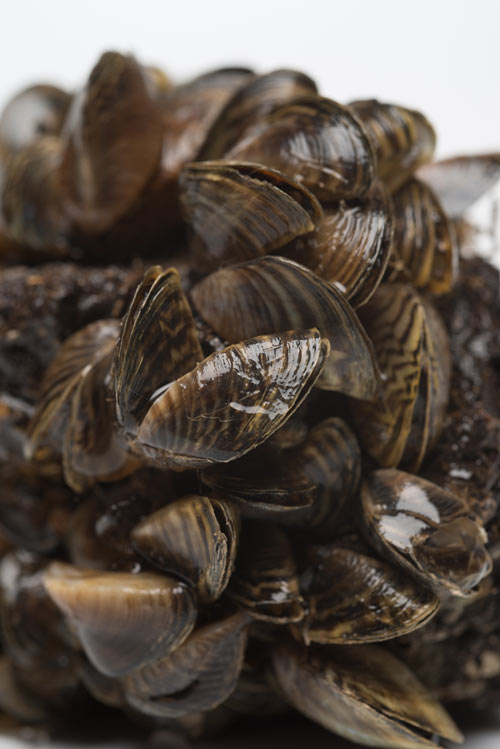 Invasive species, also known as alien, exotic, or non-indigenous species, are species found outside their natural habitat or range. Invasive species are the leading threat to biodiversity in the Great Lakes, and may interact with and exacerbate other stressors, such as climate change.
Invasive species, also known as alien, exotic, or non-indigenous species, are species found outside their natural habitat or range. Invasive species are the leading threat to biodiversity in the Great Lakes, and may interact with and exacerbate other stressors, such as climate change.
The Great Lakes – St. Lawrence ecosystem has over 180 reported non-indigenous aquatic species, more than any other ecosystem on earth. While some species have been introduced to the Great Lakes on purpose for economic or cultural purposes, other species have been introduced accidentally. Non-indigenous species have been introduced to the Great Lakes through shipping, the aquarium and horticultural trades, fisherman's bait buckets, live fish markets, and to support the fishing and agricultural industries. Non-native fish species, such as rainbow trout, are stocked to support the sports fishing industry.
Invasive zebra and quagga mussels can blanket lake bottoms and create a phenomenon called the "nearshore shunt". The nearshore shunt is caused when the invasive mussels store nutrients such as phosphorus, preventing these nutrients from reaching the deeper, offshore waters of the Lakes. This decreases food available for fish and increases the amount of algae found on beaches and shorelines.
It has been estimated that 42% of native species in the Great Lakes are currently threatened by invasive species. Controlling and mitigating the impacts of invasive species is estimated to cost Canadians over $187 million per year.
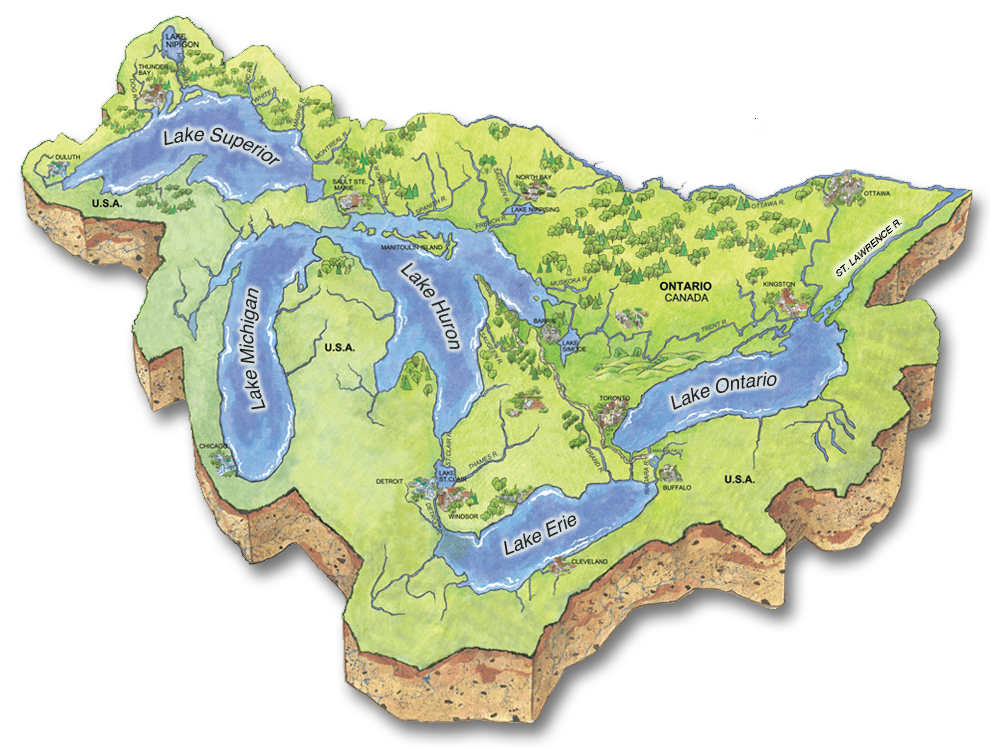
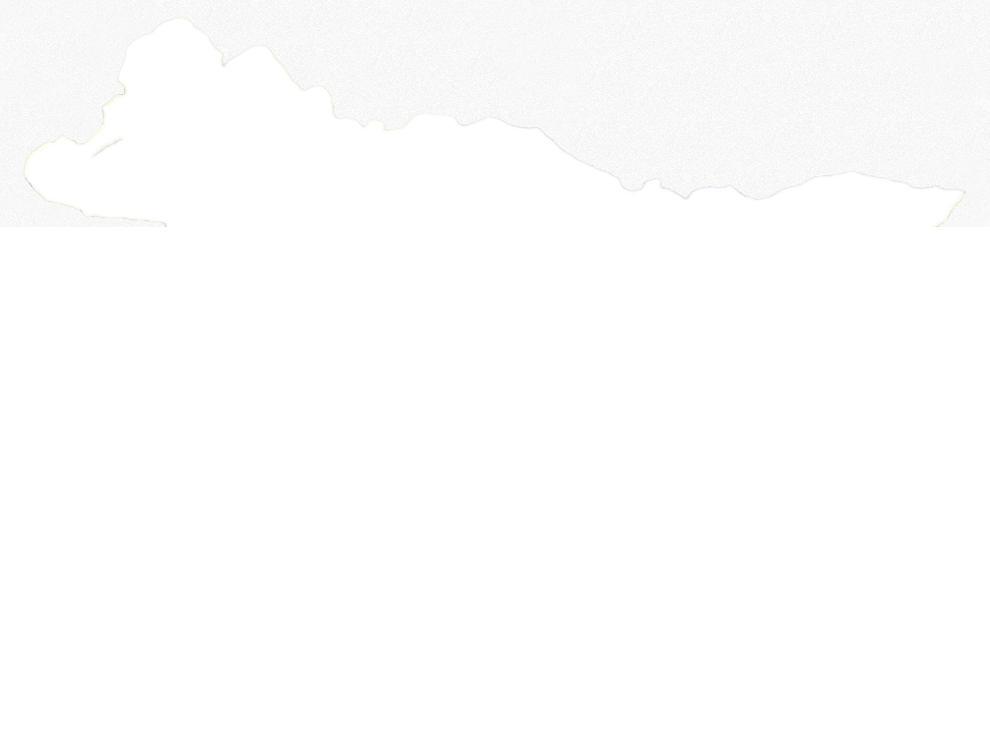


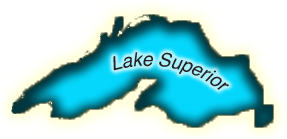
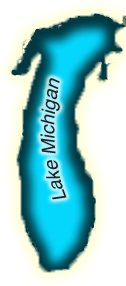
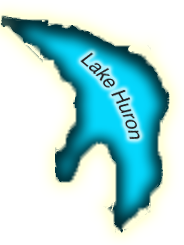

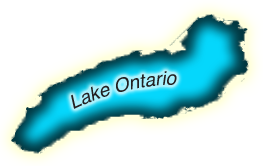
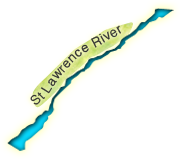
 The Great Lakes and St. Lawrence River are already being impacted by a changing global climate. Increases in air and water temperatures cause less ice cover, increase evaporation rates and impact water quality and fish populations. It is also expected that water levels in the Great Lakes will decrease. Water level changes can have impacts on many habitats, but especially in important wetlands that require specific water levels to provide many important functions such as storing and filtering water.
The Great Lakes and St. Lawrence River are already being impacted by a changing global climate. Increases in air and water temperatures cause less ice cover, increase evaporation rates and impact water quality and fish populations. It is also expected that water levels in the Great Lakes will decrease. Water level changes can have impacts on many habitats, but especially in important wetlands that require specific water levels to provide many important functions such as storing and filtering water.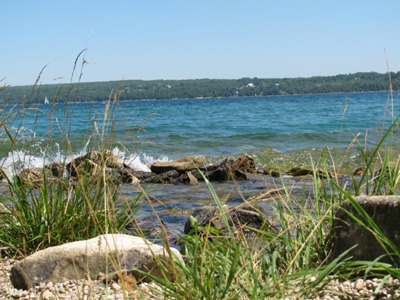 Changing water levels in the Great Lakes are having social, economic and environmental impacts. They impact access to water for lakefront property owners, recreational boating and commercial shipping on the lakes, and reduced habitat for aquatic species. In addition, artificial controls of the waters in Lake Ontario and the upper St. Lawrence River are a stress on wetlands, which rely on periodic high and low waters.
Changing water levels in the Great Lakes are having social, economic and environmental impacts. They impact access to water for lakefront property owners, recreational boating and commercial shipping on the lakes, and reduced habitat for aquatic species. In addition, artificial controls of the waters in Lake Ontario and the upper St. Lawrence River are a stress on wetlands, which rely on periodic high and low waters.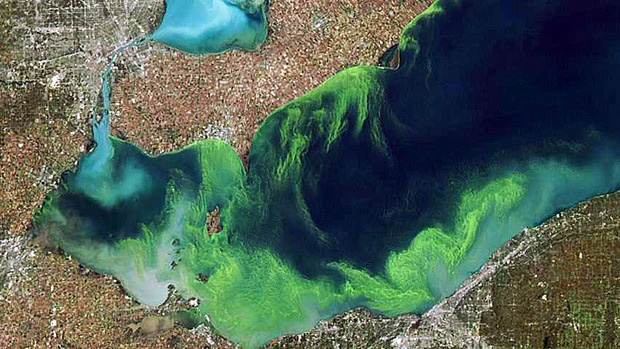 More algae is growing in Great Lakes waters. This increase is caused by an excess of nutrients in the water, mainly as a result of upstream runoff, and is being exacerbated by climate change. Some shorelines are covered by slimy masses of nuisance algae, which degrades the quality of waterfronts. In the fall of 2011 there were record levels of potentially toxic blue-green algae in Lake Erie. Some bays in other parts of the Great Lakes, such as the Bay of Quinte, also experience problems with these blue-green algae blooms. Individuals swimming or boating in these harmful blue-green algal blooms can be exposed to toxins. There are also public concerns about their impacts on drinking water.
More algae is growing in Great Lakes waters. This increase is caused by an excess of nutrients in the water, mainly as a result of upstream runoff, and is being exacerbated by climate change. Some shorelines are covered by slimy masses of nuisance algae, which degrades the quality of waterfronts. In the fall of 2011 there were record levels of potentially toxic blue-green algae in Lake Erie. Some bays in other parts of the Great Lakes, such as the Bay of Quinte, also experience problems with these blue-green algae blooms. Individuals swimming or boating in these harmful blue-green algal blooms can be exposed to toxins. There are also public concerns about their impacts on drinking water.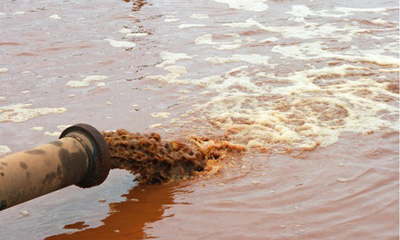 To protect our Great Lakes and St. Lawrence River, industrial wastes must be properly treated before they are discharged into streams, rivers and lakes. Petrochemical, pharmaceutical, mining, food and beverage, and paper and textile industries are some of the industries that are required in Ontario to make sure they have adequate protections in place. Additionally, air emissions from factories such as sulfur and nitrogen can enter the water cycle, fall to the ground or onto surface waters as acid rain and pollute the groundwater and the Great Lakes.
To protect our Great Lakes and St. Lawrence River, industrial wastes must be properly treated before they are discharged into streams, rivers and lakes. Petrochemical, pharmaceutical, mining, food and beverage, and paper and textile industries are some of the industries that are required in Ontario to make sure they have adequate protections in place. Additionally, air emissions from factories such as sulfur and nitrogen can enter the water cycle, fall to the ground or onto surface waters as acid rain and pollute the groundwater and the Great Lakes.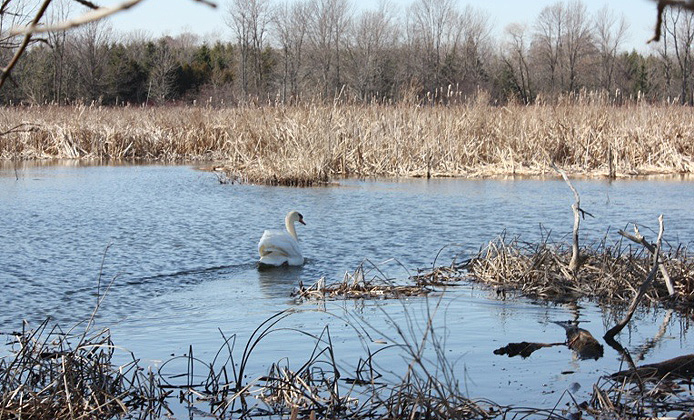
 There are increasing concerns about the impact that some newer chemicals may have on the Great Lakes and St. Lawrence River ecosystem and human health. These chemicals can originate from urban, industrial or agricultural sources. Some of these chemicals come from everyday products such as shampoo, sunscreen, pharmaceuticals and plastics. Sewage treatment plants were not designed to remove some of these chemicals, enabling these chemicals to end up in the Great Lakes and St. Lawrence River. Currently, the impact that many of these chemicals can have on our environment and health is uncertain or unknown. In order to protect our Great Lakes, the St. Lawrence River and other water sources from potentially harmful effects, keeping these chemicals out of our sewers is the best approach.
There are increasing concerns about the impact that some newer chemicals may have on the Great Lakes and St. Lawrence River ecosystem and human health. These chemicals can originate from urban, industrial or agricultural sources. Some of these chemicals come from everyday products such as shampoo, sunscreen, pharmaceuticals and plastics. Sewage treatment plants were not designed to remove some of these chemicals, enabling these chemicals to end up in the Great Lakes and St. Lawrence River. Currently, the impact that many of these chemicals can have on our environment and health is uncertain or unknown. In order to protect our Great Lakes, the St. Lawrence River and other water sources from potentially harmful effects, keeping these chemicals out of our sewers is the best approach.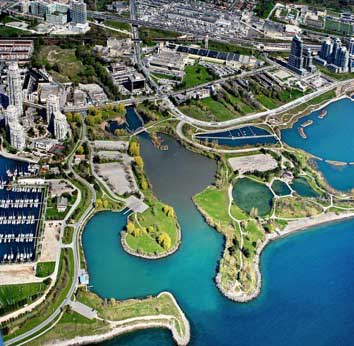
 Invasive species, also known as alien, exotic, or non-indigenous species, are species found outside their natural habitat or range. Invasive species are the leading threat to biodiversity in the Great Lakes, and may interact with and exacerbate other stressors, such as climate change.
Invasive species, also known as alien, exotic, or non-indigenous species, are species found outside their natural habitat or range. Invasive species are the leading threat to biodiversity in the Great Lakes, and may interact with and exacerbate other stressors, such as climate change. Within Ontario, future population growth will likely continue to be concentrated along areas closer to the Great Lakes and St. Lawrence River. Population growth can have economic benefits, however, it can also cause stress on natural areas and systems. People require spaces to live and work, and building new infrastructure can cause a further loss of forests, grasslands, wetlands and agricultural lands. More people can also increase both air and water pollution. More cars are on the road, more water resources are needed, and more electricity is generated. Additional roads and other paved surfaces create direct pathways for contaminants to flow to streams, rivers, and eventually the Great Lakes or St. Lawrence River.
Within Ontario, future population growth will likely continue to be concentrated along areas closer to the Great Lakes and St. Lawrence River. Population growth can have economic benefits, however, it can also cause stress on natural areas and systems. People require spaces to live and work, and building new infrastructure can cause a further loss of forests, grasslands, wetlands and agricultural lands. More people can also increase both air and water pollution. More cars are on the road, more water resources are needed, and more electricity is generated. Additional roads and other paved surfaces create direct pathways for contaminants to flow to streams, rivers, and eventually the Great Lakes or St. Lawrence River. With our busy lives today, we forget that we live so close to such an important natural resource and that our actions can impact conditions in the Great Lakes and St. Lawrence River system. Using water unnecessarily, applying excessive amounts of fertilizers or pesticides that can wash into rivers and streams and then into the Great Lakes, or changing our shorelines by removing natural plants and trees - all of these types of actions can add up. The water and ecosystems of the Great Lakes and St. Lawrence River cannot just 'naturally' recover and regenerate from all our cumulative and ongoing impacts. There are limits to how much they can adapt. Consequently, we run the risk of not being able to rely on them to provide clean water for our children.
With our busy lives today, we forget that we live so close to such an important natural resource and that our actions can impact conditions in the Great Lakes and St. Lawrence River system. Using water unnecessarily, applying excessive amounts of fertilizers or pesticides that can wash into rivers and streams and then into the Great Lakes, or changing our shorelines by removing natural plants and trees - all of these types of actions can add up. The water and ecosystems of the Great Lakes and St. Lawrence River cannot just 'naturally' recover and regenerate from all our cumulative and ongoing impacts. There are limits to how much they can adapt. Consequently, we run the risk of not being able to rely on them to provide clean water for our children.

 Dams, ponds and reservoirs have been constructed in the Great Lakes – St. Lawrence region for a variety of reasons including water supply, flood protection, power generation, and recreation. Dams and water diversions limit or change how rivers and streams are connected to the Great Lakes. Many native Great Lakes fish species require connections to streams and rivers, because they use both Great Lakes and stream habitat during their lifecycles. Streams and rivers provide important habitat for fish to spawn, act as nurseries for young fish, and offer protective habitat for fish during the winter. When natural connections between the Great Lakes and their tributaries are limited or removed, fish no longer have access to important habitat types and the number of fish, such as northern pike, may decline.
Dams, ponds and reservoirs have been constructed in the Great Lakes – St. Lawrence region for a variety of reasons including water supply, flood protection, power generation, and recreation. Dams and water diversions limit or change how rivers and streams are connected to the Great Lakes. Many native Great Lakes fish species require connections to streams and rivers, because they use both Great Lakes and stream habitat during their lifecycles. Streams and rivers provide important habitat for fish to spawn, act as nurseries for young fish, and offer protective habitat for fish during the winter. When natural connections between the Great Lakes and their tributaries are limited or removed, fish no longer have access to important habitat types and the number of fish, such as northern pike, may decline.
